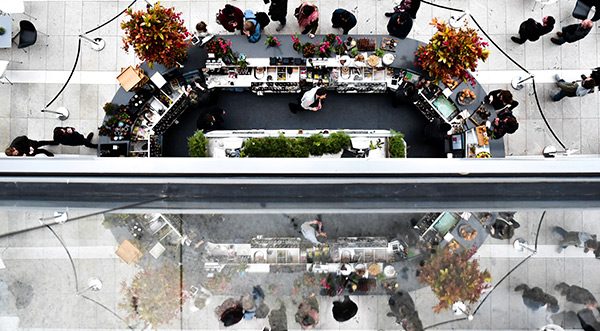Singles’ Day
September 7, 2020Since e-commerce giant Alibaba decided to get involved, Singles’ Day on November 11 has become an increasingly significant date on the calendar for shoppers in China. It couldn’t be further from its origins, what started as a simple day where single people treat themselves is now a globally-recognised shopping festival, which has so far broken sales records every year since it became a ‘thing’ in 2009. And 2017 was no different, with shoppers spending a massive $25 billion in the space of 24 hours.
So how did businesses capitalise on the single biggest shopping day of the year, and what are the key takeaways from this year to prepare for 2018?
‘Retro’ and nostalgia got people excited
While the Gen Y/millennial market has driven Singles’ Day shopping in the past (after all, it was originally their invention), according to analysis by Tmall this year saw those in their 40s and 50s getting involved in a more significant way. Retailers tapped into feelings of nostalgia and yearning for a simpler time with precisely-targeted campaigns:
– Tmall rode the nostalgia wave with an 80s-style retro video tribute to the legendary CCTV Chinese New Year annual party, with Karaoke TV, break dancing and self-mocking music

– Want Want Group played on the fact that ‘bigger’ means ‘older’ as well as ‘larger’ in Chinese. It advertised its 11/11 gift box, which includes ‘cakes bigger than your face’ and supersize cans of drink by showing a grateful adult receiving his childhood favourite Hot Kid Milk from his mother, with the strap line ‘Hot Kid got bigger’
Key takeaway
Don’t limit your appeal to just one demographic. While the younger market may have set the agenda in the past because they’ve grown up with the mechanisms you use to engage them, there’s a keen older generation, arguably with more disposable income, waiting for you to talk to them in a language they understand. Find out all you can about them, how they live and how to communicate with them to build a campaign that speaks to them next year.
Chinese traditions and culture provided inspiration
Patriotism, culture and tradition were high on the agenda this year, thanks in part to the 19th National Party Congress. It was a smart move for those brands that did their research and put some thought into the execution, with broad, cross-generational appeal:
– Tmall promoted a ‘traditional’ style video in advance of 11/11, based on ‘qingdan’, which neatly refers to both a magical pill that may increase your longevity and a shopping list in a perfect example of linguistic serendipity
– The Forbidden City’s launch of a series of colourful tapes reflecting both history and creativity inspired beauty bloggers to use them to decorate perfumes and lipsticks. With the application of some skilled photoshopping, they led a number of people to believe the notoriously choosy world heritage site had partnered with skincare and makeup companies. This had the dual effect of promoting both the brands and the Forbidden City itself in a way which latched on to the creative, fun-loving nature of the bloggers as well as the proud history of one of the greatest symbols of Chinese civilisation.
Key takeaway
Using China’s rich culture and traditions is a sure-fire way to appeal to audiences young and old, inspiring them to feel proud of their heritage and history. But doing it properly involves careful research and in-depth ‘on the ground’ knowledge from experts based in the territory. All too often, Western brands only capture the form, not the essence of tradition when developing their campaigns. It takes more than red packaging and golden dragons to capture the true Chinese spirit.
AI is still fascinating
Machine learning, AI and chatbots have been dominating the tech headlines all year, with Asia leading the way in their adoption as virtual concierges and smart assistants. It’s no surprise that Alibaba, the company that saw the commercial potential of singles day almost a decade ago, homed in on its value as a sales tool this year:
– Alibaba installed a virtual fashion adviser, FashionAI, in 13 stores around China, specifically for Singles’ Day. Operated via a touchscreen, customers could interact with the adviser while trying on clothes. The system used information embedded in clothing tags to help recommend other items, and could ask questions to learn about customer preferences as well as summon a human assistant if necessary
– It also launched a WeChat campaign featuring a conversation between a clothing factory and an AI designer which went super-viral, highlighting in a humorous yet thought-provoking way just how AI will affect our everyday lives. The twist in the tale is that the AI designer exists outside the campaign and is estimated to have delivered 400 million Singles’ Day flyers this year.
Key takeaway
There’s a reason why AI is big news – it is predicted to increase global GDP by 14% by 2030 (the equivalent of a massive $15.7 trillion), and will change the way we all work, rest, play – and shop. If it isn’t part of your plans for next Singles’ Day, you’re likely to miss out on the levels of engagement enjoyed by brands with cognitive campaigns.
In the final reckoning in the days following this year’s 11.11, records were broken, those retailers who took part were counting their cash and Alibaba was celebrated once again as the e-commerce giant who invented an entire festival devoted to increasing its profits, out of next to nothing. A move towards more considered, segmented campaigns appears to be the way to go in 2018 – if Tmall’s report that the Singles’ Day shopper mindset has shifted from ‘I want shopping’ to ‘I want good shopping’ to ‘I want unique and good shopping’ holds true. Brands preparing for next year’s festival will need to put some of this year’s key takeaways into action.

